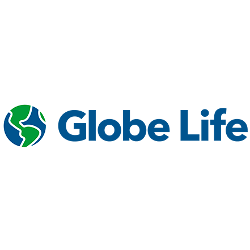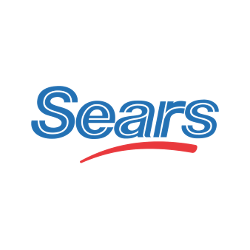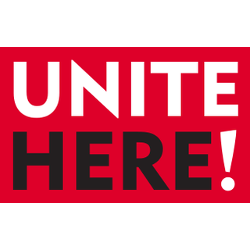
Sigma Voice's Press 1 Campaigns turn your voice broadcasts into two-way conversations. Engage your audience directly by allowing them to press 1 to be connected instantly, whether for sales, customer support, or important updates. With easy setup, detailed tracking, and a user-friendly interface, our Press 1 Campaigns help you boost engagement, drive action, and maximize the impact of your message. Connect directly and efficiently with Sigma Voice's interactive solutions.

A press 1 campaign is a powerful and efficient way for businesses and organizations to connect with a large audience using automated calls. By utilizing a press 1 campaign dialer, recipients can press 1 for immediate assistance, enhancing customer engagement and response rates. This guide will explain what a press 1 campaign is, how it works, and how to set up a successful campaign.
A press 1 campaign is an outbound IVR solution that delivers pre-recorded messages to a large list of recipients. When a recipient answers the call, they hear the message and are given the option to press 1 to be transferred to a live representative for further assistance. This strategy is commonly used for lead generation, customer notifications, and marketing purposes.
Like any outbound phone call, a voice broadcasting press 1 campaign calls can be answered in three ways
The recipient listens to the message and presses 1 to connect with a live agent.
A specific message is left requesting the recipient to call back.
The system may retry the call later based on the settings.
Advanced answering machine detection technology, such as those used in Vicidial press 1 campaigns, identifies whether a call is answered by a human or voicemail. Businesses should prepare different recordings for each scenario
"Press 1 to connect with our office. To be removed from our list, press 9."
"Please call our office at your convenience. We look forward to hearing from you."
Displaying your organization's Caller ID on recipients' phones enhances transparency, builds trust, and increases the likelihood of answered calls. When recipients see a recognizable phone number or caller name, they are more inclined to pick up the call, knowing it's from a legitimate source.
Caller ID typically includes a phone number, but it can also display a Caller Name, also known as CNAM, which provides additional context about the caller. For example, instead of just showing a generic phone number, it could display your business name, such as "ABC Nonprofit" or "XYZ Services." This feature helps differentiate your calls from spam or unknown numbers.
Implementing caller ID and caller name not only improves response rates but also contributes to brand consistency and recognition. Customers and stakeholders are more likely to engage positively when they see a familiar and trusted name on their screens.
To optimize the effectiveness of your Caller ID, ensure that your business phone numbers are registered with reputable carriers and comply with industry standards, such as STIR/SHAKEN authentication protocols, to prevent spoofing and ensure authenticity.
Using Caller ID and Caller Name offers several benefits, including enhanced credibility, increased answer rates, reduced call blocking, consistent branding, compliance with regulations, and improved call-back rates.
To run a successful press 1 campaign, focus on these critical factors
Accurately determining the size of your target audience is crucial for planning an effective campaign. A larger audience may require more resources, while a smaller audience allows for more personalized outreach. Proper segmentation of phone numbers based on demographics or behavior can further enhance the campaign’s success.
Ensuring your team can handle live transfers efficiently is vital to maintaining a positive customer experience. An insufficient number of representatives may lead to long wait times and frustrated recipients, while having too many can lead to underutilization of resources. Balancing the number of agents based on expected call volumes and transfer rates is essential for smooth operations.
Having an adequate number of phone lines is critical to prevent bottlenecks, especially during peak calling hours. Insufficient lines can lead to missed opportunities and dropped calls, while too many lines can result in unnecessary costs. Evaluating call concurrency rates and peak usage trends helps ensure that the right number of lines is in place to handle call traffic efficiently.
Scheduling calls during the hours most likely to reach your audience can significantly improve response rates. Consider factors such as time zones, typical working hours, and audience behavior patterns to optimize the timing of your calls. Additionally, respecting Do Not Call (DNC) regulations and preferred calling hours ensures compliance and a better reception from recipients.
Prepare your team for success by introducing the press 1 campaign software and ensuring they are familiar with its features and functionalities. A well-trained team can effectively manage inbound calls and maximize the success of your campaign. Start by providing a comprehensive walkthrough of the software interface, demonstrating key functions such as call tracking, transfer options, and reporting features. Ensuring they are comfortable with the platform will help them respond confidently and efficiently.
One crucial aspect of training is playing the audio recordings that will be used in the campaign. This allows your team to understand the messaging and tone being conveyed to recipients, helping them align their responses accordingly. Encourage team members to analyze the recordings, taking note of key details such as the call-to-action and any compliance language that may be included. Understanding the flow of the recorded message enables them to provide consistent follow-up responses.
Additionally, train your team to handle common questions and objections they may encounter during live transfers. Some frequently asked questions include
Role-playing exercises can be an effective way to reinforce these responses. Have team members practice answering these common questions with a focus on maintaining a polite, professional, and helpful tone. Providing scripts or guidelines can be useful, but encourage flexibility so that responses feel natural and personalized.
In addition to handling inquiries, train your team to recognize signs of frustration or confusion from recipients and how to de-escalate situations effectively. Active listening, empathy, and clarity in communication can go a long way in ensuring a positive experience for the caller.
Finally, establish a continuous feedback loop by monitoring calls and providing constructive feedback. Encourage team members to share their experiences, challenges, and suggestions to improve the overall handling process. Ongoing training sessions and updates based on customer interactions can help refine their skills and keep them informed of any changes to the campaign strategy.
Each call generates a detailed report, including
Response rates for press 1 campaigns typically range from 1% to 10%, depending on several key factors that influence audience engagement and campaign effectiveness. Understanding these factors can help optimize your campaign to achieve better results.
Choosing the right communication channel is essential to maximize engagement and achieve your campaign goals. Phone, email, and SMS campaigns each offer unique advantages and reach rates, but phone campaigns often outperform the others when it comes to direct engagement and response rates.
A phone call campaign can reach up to 95% of your target list, making it one of the most effective ways to engage recipients directly. Phone calls provide a personal touch, allowing for immediate interaction, real-time responses, and the opportunity to address concerns or questions instantly.
Email campaigns typically see an average 25% open rate, which means a significant portion of your audience may never view your message. Emails are effective for non-urgent communications, detailed information, and follow-up purposes, but they often struggle to achieve high engagement due to inbox overload, spam filters, and competing distractions.
SMS campaigns have an impressive 98% open rate, with most messages being read within a few minutes of receipt. SMS is ideal for time-sensitive notifications, appointment reminders, and brief updates. However, the character limit and lack of personalization compared to phone calls can sometimes make it less effective for more complex interactions.
Ensure your message is clear and concise, with an actionable call-to-action (e.g., “Press 1 to speak with us now.”)
Keep your campaign compliant with telecommunication laws (see below).
Test your system before launching the campaign to ensure messages are delivered correctly.
Provide sufficient training for your team to handle live responses effectively.
For a customer base of 10,000, the following results are typical
4,500 calls
4,500 calls
1,000 calls
To maximize efficiency, divide your list into smaller segments that your team can manage effectively.
At Sigma Voice, we offer flexible and cost-effective pricing for our Voice Broadcasting Press 1 Campaign services. Whether you're reaching a small group or executing a large-scale campaign, our pricing is designed to fit your needs and help maximize the impact of your outreach efforts.
No contracts, no commitments—only pay for the calls you make, making it ideal for occasional campaigns and variable usage. You only pay for the successful connections made through the Press 1 Campaign.
Reduce costs with bulk pricing options for high-volume campaigns. The more calls you make, the better your rate, ensuring maximum reach at the best prices.
Perfect for businesses with regular communication needs, offering lower per-call costs, priority routing, enhanced reporting, and additional features like customizable call scripts and advanced analytics.
Interested in tailoring a plan that best fits your specific needs? Request a custom quote today and our team will help you find the most cost-effective solution for your Voice Broadcasting Press 1 Campaign.
Sigma Voice ensures that all Press 1 voice broadcasting campaigns are secure, private, and fully compliant with industry regulations. Our platform is designed with advanced security measures to protect contact data, prevent unauthorized access, and ensure reliable interactive call delivery.
All contact lists, call recordings, and interactive responses are encrypted during transmission and storage to prevent unauthorized access.
All calls are processed through trusted telecom networks to prevent interception, spoofing, or unauthorized modifications.
Role-based access controls (RBAC) ensure that only authorized users can configure, manage, or access call logs and campaign data.
Our system adheres to FCC regulations, FTC Telemarketing Sales Rule, GDPR, and CCPA to ensure lawful and responsible automated calling.
Recipients can opt out of Press 1 campaigns at any time, ensuring full compliance with Do Not Call (DNC) regulations and respecting consumer preferences.
Real-time monitoring, fraud detection, and call authentication tools prevent misuse, unauthorized access, and spam-like behavior.
Sigma Voice provides a secure and compliant Press 1 voice broadcasting solution, enabling businesses, organizations, and institutions to engage audiences interactively while ensuring data privacy, security, and legal compliance.
Using Voice Broadcasting Press 1 Campaign services involves compliance with several legal regulations to ensure that all communications are ethical and lawful. At Sigma Voice, we prioritize helping you adhere to these regulations while using our platform responsibly.
Adhere to the Telephone Consumer Protection Act (TCPA) and Do Not Call (DNC) regulations. Obtain express consent before making non-emergency robocalls. Ensure your campaigns do not violate the Do Not Call registry or telemarketing restrictions.
Make sure recipients have opted in to receive your messages and provide them with a clear and easy way to opt-out. Sigma Voice supports automated opt-out management to help you maintain compliance and respect recipients' preferences.
Clearly identify your organization at the start of the call and ensure your message is truthful and not misleading. Misleading or deceptive practices can lead to fines and other penalties under consumer protection laws.
Follow federal and state-specific rules regarding acceptable calling hours. Typically, automated calls should occur between 8 AM and 9 PM in the recipient’s local time zone. Avoid calling during restricted hours to stay compliant.
Some calls, such as emergency alerts or public safety messages, may be exempt from certain regulations. However, ensure you meet the legal requirements before bypassing opt-in requirements for non-emergency calls.
Protect the privacy of recipients’ personal information and comply with relevant data protection laws such as GDPR or CCPA. Ensure that all sensitive data is securely stored and managed, and that you're transparent about data usage.
By following these best practices, you can use Voice Broadcasting Press 1 Campaigns effectively while remaining compliant with all relevant laws. For more detailed compliance guidance, please review our Terms of Service or consult with a legal expert for additional advice on specific regulations.

Voice broadcasting press 1 campaigns are an effective way to engage with your audience, providing instant connection and interaction. By following best practices, preparing your team, and analyzing results, you can optimize your outreach efforts for success. Start leveraging the power of voice broadcasting today to enhance customer engagement and achieve better outcomes for your organization.
Read what our satisfied customers have to say about Sigma Voice. Discover how our advanced communication solutions have transformed their business operations and customer interactions.
Tom was awesome! He spent time on the phone helping me get set up. Great intro by Tom to my new voice blast service! Wish I c...
Sigma was very helpful in our company meeting a call documentation requirement for a Federal regulation. Tom gave us great se...
Sigma Voice has allowed our organization to disseminate information quickly, thoroughly and to a wide audience. The software ...
This is the first time I used this company and am extremely pleased with the excellence in customer service. There was no nee...
This service is fantastic. Setting up automated calls is super easy and affordable. I highly recommend it.
Sigma Voice was so easy to set up. I needed to get an immediate message out to my 60+ family members. I sent a sign up messag...

Globe Life is a leading insurance provider known for its trusted coverage and excellent customer service.

Harvard University, one of the world's most prestigious institutions, trusted our solutions for communication excellence.

Sears has relied on innovative solutions to improve its customer outreach and retail operations.

The largest industrial union in North America trusts us for seamless communication solutions.

UNITE HERE connects workers across the U.S. with our dependable communication systems.

The American Red Cross depends on us to deliver messages during critical missions and emergencies.
Experience the benefits of Sigma Voice's advanced communication solutions, including IVR, SMS broadcasting, voice broadcasting, and telecom auditing. Sign up today to enhance your customer interactions, streamline your business processes, and optimize your telecom expenses with expert auditing services.
Prefer to talk right away? Call us at (800) 905-9140.
